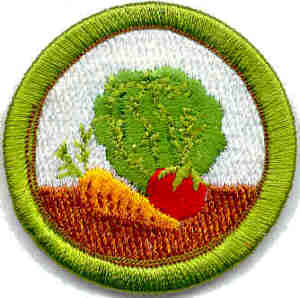
Gardening
- Do the following:
- Grow six vegetables, three from seeds and three from seedlings, through harvesting.
- Grow six flowers, three from seeds and three from seedlings, through flowering.
- Give the food value of the following:
- Three root or tuber crops.
- Three fruits or vegetables which bear above the ground.
- Three leafy greens.
- Tell what you did to control insects or diseases. Tell where and how to use a contact insecticide a stomach poison, and a fungicide.
- Do THREE of the following:
- Test 100 garden seeds for germination.
- Make a hotbed or cold frame, and grow plants in same.
- Clean, bunch, or pack and three vegetables for market.
- Enter on of the vegetables or flowers you have grown in a show, fair, or festival.
- Make a storage bin or pit for home use. Store part of your crop you have grown. Describe the process.
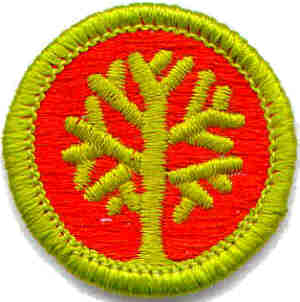
Genealogy
- Explain the meaning of genealogy and genealogical resources.
- Begin a pedigree chart with yourself and fill it in as far as you can at the beginning of your project. Add any additional names, dates, or places that you find.
- Show yourself as a child on a family group record form, and show one of your parents as a child on another family group record form.
- Interview an older relative to obtain information about your family. This interview may be in person, by telephone, or by letter. Add any information obtained to your pedigree chart and family group records.
- Obtain at least one genealogical document showing proof of some information on your pedigree chart or family group records. This document may be located in your home, a courthouse, an archive, or library, etc.
- Tell how you would evaluate genealogical information.
- Do ONE of the following:
- Do a time line for yourself or for a close relative.
- Keep a journal for 6 weeks, writing in at least once weekly.
- Write a short history of yourself or of a close relative.
- Do ONE of the following:
- Tell how the development of computers is affecting the world of genealogy.
- Tell how the development of photography (including microfilming) had influenced genealogy.
- Tell how personal and family history have begun to influence the way society looks at local, national, and international history.
- Contact ONE if the following and ask a question
relating to its genealogical services or
activities; report the results:
- A lineage society
- A surname organization
- A professional genealogist
- A genealogical education facility or institution.
- A genealogical record repository of any type (courthouse, genealogical library, state archives, state library, national archives, etc. )
- Tell where you would find current information about genealogical records and research methods.
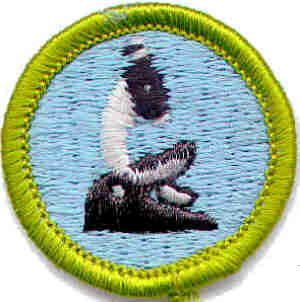
GeneralScience
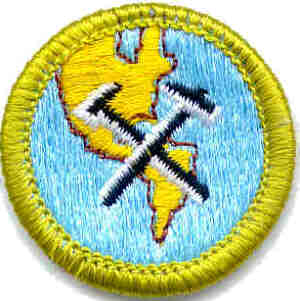
Geology
- Explain what geology means.
EARTH MATERIALS - Make a collection of at least 10 different earth
materials or geological specimens from your
locality or an area of special interest to you.
Label, to the best of your ability, classify, and
explain the origin, and use of the materials
collected.
- Alternatives: In place of requirement 2, you may present a collection of 10 different rocks, with specimens of sedimentary, igneous, and metamorphic rocks properly marked, cataloged and displayed.
- Or you may present a collection of 10 different minerals (or ores) properly marked, cataloged, and displayed. Also identify each of the 10 minerals and give their sources and possible uses.
- Define rock. Discuss and define three classes of rocks. List the characteristics of each class, how they are formed, and how they are named.
- Define mineral. Tell how to identify minerals.
Tell how rocks and minerals differ. List five of
the most common rock-forming minerals. Tell how
they are identified. Tell how hardness, specific
gravity, color, streak, cleavage, luster, and
crystal form are useful in identifying minerals.
EARTH PROCESSES - Secure a topographic map of your how locality or an area of special interest to you. Explain the origin of the landscape, including any unusual features. Account for any influences of the landscape on the location of towns, parks, highways, railroads, airports, industries, or similar structures.
- Draw a diagram of the hydrologic cycle and discuss it and its effects with your counselor.
- Do ONE of the following:
- Tell about the occurrence of volcanos on land and in the ocean. Describe the difference between intrusive igneous rocks and extrusive igneous rocks.
- Describe the major steps in the geologic history of a mountain rage. Describe the anticline, syncline, fault, strike, dip and an unconformity. Discuss the relationship between mountain building and erosion in forming the present landscape.
- Describe the major features of an ocean floor between the shorelines on either side.
EARTH HISTORY - Make a chart showing the geological eras and periods and show in what geologic time the rocks in your region were formed.
- Do ONE of the following:
- Tell what fossils are and how they aid in understanding the story of the earth's history.
- Make a collection of 10 different fossils and identify them to the best of your ability.
- Discuss with your counselor the theory of continental drift.
GEOLOGY AND PEOPLE - Discuss two environmental problems related to geology. Tell how land-use planning relates to geology. Tell why faulting, landslides, waste disposal, pollution, water supply, and subsidence are important in land-use planning. Give an example of poor use of land in your area or an environmental hazard in your area related to geologic features or processes.
- Do ONE of the following:
- Describe five energy sources, how they occur, and how they are used today. Describe the source of the products supplied by your local utilities. Tell which of these products are related to geologic processes.
- Visit a mine, oil or gas field, gravel pit, stone quarry, or similar area of special interest to you. Make a collection of geologic specimens found at the site visited. Tell about the geology of the place.
CAREERS IN GEOLOGY - Do ONE of the following:
- Read a pamphlet about careers in geology. Tell what you learned.
- Visit with a geologist, other than your counselor. Tell what he does. Find out how he prepared for the job.
- Discuss with your counselor what you have learned about careers in geology and how to prepare for them.
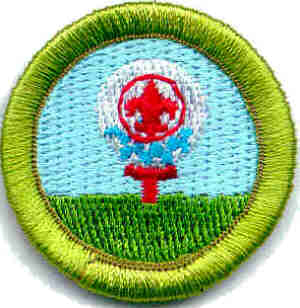
Golf
Related link: Welcome to the United States Golf Association
- Study the USGA Rules of Golf now in use.
- Tell about the three categories of golf etiquette.
- Show that you know about the definitions of golf terms.
- Tell about your understanding of the Golf Rules in Brief.
- Show that you understand the "Rules of Amateur Status."
- Tell about your understanding of the USGA system of handicapping. Show that you have established your handicap under this system.
- Do the following:
- Tell about the early history of golf.
- Describe its early years in the United States.
- Tell about the accomplishments of a top
golfer of your choice from each other
following periods:
- Before 1900
- 1900 to 1940
- 1940 to present
- Talk over the following:
- Six vocational opportunities of golf.
- Advantages of the amateur golfer
- Tell how a golf exercise plan can help you play better. Show two exercises that would improve your game.
- Show the following:
- The proper grip, stance, pivot, and parts of a good swing.
- The full wood shot, played from a tee.
- The fairway wood shot.
- The long iron shot.
- The short iron shot.
- The approach, chip, pitch, and pitch-and-run shots.
- The sand iron shot, bunker, or heavy rough recovery shots.
- A sound putting stroke
- Play a competitive round of golf with another
golfer about your age and your counselor, or an
adult he has approved: OR enter and participate
in a competitive golf event. In either case,
- Follow the Rules of Golf.
- Use an approved handicap.
- Practice good golf etiquette.
- Show respect to fellow golfers, committee, sponsor, and gallery.
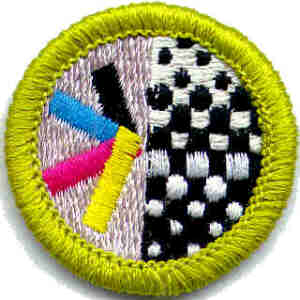
Graphic Arts
- Tell about the processes for producing printed communications: offset lithography, gravure, flexography, letterpress (relief), screen printing, and electronic processes. Show samples of each or make sketches that explain how these processes work.
- Design a printed piece such as a poster or advertising flier. Make an accurate layout and be sure to specify the type to be used. Explain the difference between typefaces and explain their purposes. Explain how type is arranged and the skills needed to proceed to print.
- Explain the difference between a line and a halftone illustration and how each is made.
- With your counselor, choose ONE of these printing
processes to print the piece you designed.
- Offset lithographic printing
- Using the layout you made, set the type, keyline or pasteup, and prepare a suitable negative.
- Properly strip the negative for exposure onto an offset plate. Expose and process this plate.
- Using this plate, print at least 50 copies.
- Screen process printing
- Using the layout you made, hand letter or set the type, keyline or pasteup, and prepare a photographic or hand-cut stencil.
- Adhere this stencil to a screen frame and prepare the screen for printing.
- Using a screen printing base with clamps, print at least 25 copies.
- Letterpress printing
- Using the layout you made, set the type either by hand or machine and select an appropriate engraving to illustrate your project.
- Lockup your type and engraving in a chase for printing.
- Using this form, print at least 50 copies.
- Offset lithographic printing
- Do the following:
- Review with your counselor a brief background on the history of bookbinding.
- Explain the differences between perfect, spiral, plastic comb, and case binding.
- Explain saddle stitching, perfect binding, and four side trim.
- Make a scrapbook and bind it using one of the methods.
- Explain the pagination process.
- Identify three career opportunities in graphic arts and tell how you can prepare for each of them.
- Do ONE of the following:
- Visit a newspaper printing plant. Follow a story from the editor's desk through composition and printing. Tell about your visit, including careers you observed and the equipment used in the production of the newspaper.
- Visit a commercial printing plant. Follow a job through production. Tell about your visit, including careers you observed and the equipment used in the production of the job.